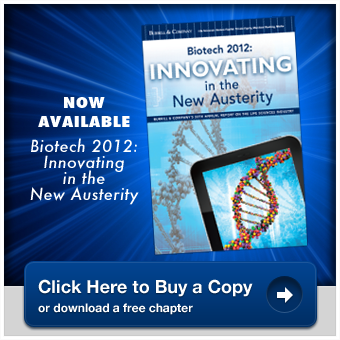Sanford-Burnham Medical Research Institute and the Mayo Clinic are extending their institutions’ pilot program to accelerate early-stage drug discovery for serious diseases that are currently without available therapeutics. The Mayo Clinic will contribute its knowledge of diseases and disease targets and Sanford-Burnham's Conrad Prebys Center for Chemical Genomics will contribute its discovery platform.
University and hospital researchers excel at identifying potential drug targets, but are challenged by limited access to the extensive small molecule libraries and high throughput screening capabilities critical to move drug discovery research through preclinical development into early clinical trials.
“The Mayo Clinic-Sanford-Burnham collaboration provides an avenue for Mayo scientists to rapidly translate basic science discoveries into screening platforms that will enable new drug discovery, and a new paradigm in drug development,” says Andrew Badley, associate dean of research resources at Mayo Clinic.
The Prebys Center’s discovery platform includes large scale screening and a compound library, one of the largest collections in the nonprofit research community. By providing assay development, high-throughput screening, and lead generation, scientists at Sanford-Burnham will expedite discovery of compounds to treat Mayo Clinic patients. In turn, potential new drug target discoveries from the Mayo Clinic will inform and guide development of new drug screening platforms at Sanford-Burnham.
The new agreement builds from the pilot program and expands the number and scope of drug discovery projects. In 2012, six projects involving the Mayo Clinic's Center for Translational Science Activities, Cancer Center, Center for Individualized Medicine, and Center for Regenerative Medicine covered diseases related to cancer, immunology, and neurology.
“We look forward to further engaging with our Mayo Clinic colleagues as we develop innovative screens to identify chemical compounds that modulate the activity of clinically relevant targets,” says Michael Jackson, vice president of drug discovery and development at Sanford-Burnham. “If successful, these compounds will form the basis of completely novel first in class therapies.”
March 15, 2013
http://www.burrillreport.com/article-initiative_expanded_to_advance_translational_research.html





.gif)